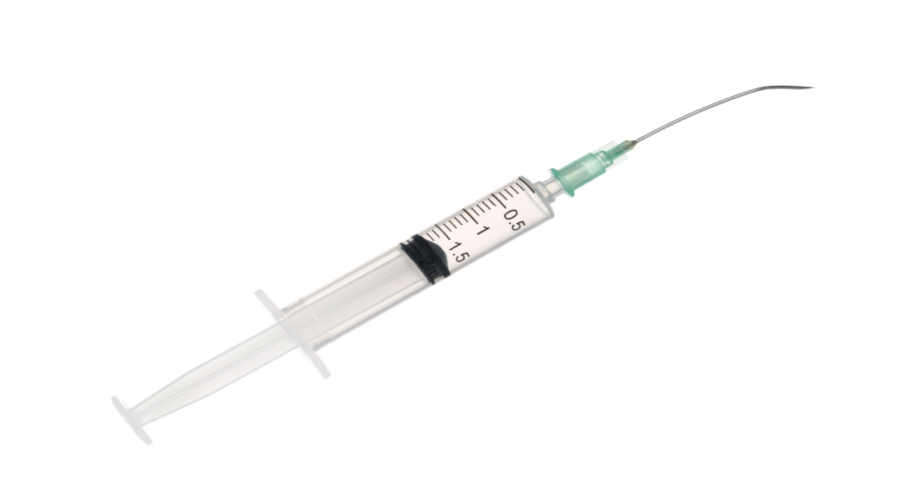As the number of seniors in the United States continues to rise, Medicare Part D open enrollment is becoming an increasingly important service in the pharmacy. Almost 90 percent of Medicare patients take a prescription medicine and over half take four or more.
Although Medicare patients have the option to change plans each year, less than half actually review their plan annually. This negligence can be costly. According to one survey, only 6 percent of people on Medicare had coverage that provided them with the lowest total out-of-pocket costs for their prescription drugs. Switching to the plan with the lowest total costs could save an average of $682.
Kim Wixson, owner of Cottonport Corner Drug, sees this scenario play out all the time with elderly patients in her community. Often, seniors simply sign with whichever plan has nice reps or visits their house, even if the plan is not a good fit. She recalled one husband and wife who signed up for the same plan even though they had different conditions with very different medication requirements. The single plan clearly couldn’t be best for both of them, but they didn’t think twice about it. After her technician performed a plan analysis for them, she was able to save them each hundreds of dollars on their medications alone.
Part of the problem is many seniors don’t realize they could be on a better plan, and many don’t have anyone to help them navigate the plans, which can be complicated. “If the techs and I were having a hard time understanding the Medicare Part D plans and we deal with insurance every day, then I couldn’t imagine the stress that it was causing my little old ladies and elderly population,” Wixson said.
Enrique Reynoso, now the owner of Beacon Wellness Pharmacy, regularly encountered this confusion when he ran the Part D open enrollment program for Walgreens, and it’s one reason he’s chosen to offer the service at his independent pharmacy. “I always felt like the elderly was the highest-need group in the community,” he said. “A lot of questions about their meds. A lot of questions about how to get it paid for, what insurance would be good, a lot of enrollment questions.”
Reynoso is driven to help meet his community needs in every way possible, and he sees Medicare enrollment as a win-win opportunity for the pharmacy. “It’s good for the community, it’s good for the business,” he said. “It’s good to help your customers and be known as the person who goes out of your way to help them. Even though there’s no cash value at the beginning of this service, in the long run you build a nice relationship with your customers, they trust you, and they come in and spend money on your organization and they support you in the community.”
Reynoso’s Medicare Part D enrollment service has led to some meaningful experiences with his patients. One woman needed a specific brand of specialty medication for a serious condition, but the formulary under her plan and the other plan options only included the generic version. No one wanted to cover it because of the cost. The generics, though, couldn’t replicate the release formula of the brand, and as a consequence they did not work for her. Without coverage, she wouldn’t be able to pay for the expensive drug. After making numerous phone calls, gathering documentation, and producing evidence, Reynoso was finally able to secure her a plan that covered her essential medication.
“She was able to stay on her meds, switch insurances, and make sure all her other meds were covered. It’s a win-win situation. The patient doesn’t have to go without that med, we made a friend, the patient is getting more optimal service, she’s getting what she needs. I just think that’s a great service to provide to the community.”
In Wixson’s experience, every time her service has saved patients money on their plan, the pharmacy has also saved money—mostly through lower DIR fees. Her Medicare Part D comparison tool breaks down how each plan will not only affect the patient’s pocketbook but also how it will ultimately affect the pharmacy’s DIR fees at the end of the year. “It’s really a win-win,” she said. “It’s cheaper for the patient and for the pharmacy.”
Keys to success
During a Medicare Part D open enrollment consultation, a technician or pharmacist will explain the differences of various plan options in terms of copays, deductibles, premiums, total out-of-pocket expenses, and prior authorization requirements. Wixson’s pharmacy uses Amplicare to compare plans based on each patient’s particular drug regimen. Her technician will usually narrow down the options to the three best plans and walk the patient through each of them. If the patient qualifies for subsidies, the pharmacy will apply for those on behalf of the patient.
Like Wixson, Reynoso uses software where he can input the patient’s medications and compare the costs across multiple plans. He also typically prints a report of the top three plans and explains the differences to the patient. If there are enough people who would benefit under a particular PBM, he will ask reps from the PBM to come in for a day to explain their plan and answer any questions. This helps patients learn more about the other parts of Medicare beyond Part D as well, such as dental and primary care coverage.
Wixson used to do the consultations herself, but she has delegated the process entirely to one of her technicians. She says this is the most important part of making the service successful. Having a dedicated Medicare specialist frees up her time as a pharmacist and business owner for other tasks and allows one team member to really get to know Medicare and become a true expert. Wixson will field the initial requests from patients and then refer them to her technician for the rest of the process. “Introducing my technician as the Medicare expert has helped. They always want to hear from the pharmacist first about what to do, but once they sit down with her and realize how knowledgeable she is, they trust her and don’t even call for me anymore,” Wixson explained.
Wixson stressed the importance of making these consultations appointment-based rather than allowing walk-ins. This reduces disruption to workflow and gives the technician time to research plans for the patient before they come in, which makes the appointment much more efficient. Scheduling would be important during any time of the year, but it is paramount during open enrollment because it falls during the busiest seasons of the pharmacy: flu and cough and cold. When patients request a consultation—even if they show up to the pharmacy with their information in hand—she’ll take their information and give them a call later to set up an appointment after she has analyzed plans.
Wixson uses a couple of strategies throughout the year to stay ahead of the curve for new Medicare patients. Amplicare will send her monthly reports on which patients are becoming eligible for Medicare soon, which allows Wixson to reach out to those patients ahead of time and provide them with some clarity before they are bombarded with ads from various plans.
She also uses Amplicare when a drug rejects nonformulary. “You can go onto Amplicare and do a search on the plan and the drug to find the alternative,” she explained. “That helps so much when you fax the doctor: ‘Not on formulary but this one is.’ It cuts out all this time of them sending three or four drugs and them not being on the formulary also.”
Additionally, she and her team will take notes throughout the year on patients with high copays, especially those on fixed incomes, and her tech will run a report through Amplicare on plans that cover that patient’s drugs. If she finds better options, she’ll make sure to inform that patient when the next open enrollment comes around and get them on a more affordable plan.
Not preferred?
There have been times when the most affordable plan for the patient did not include Cottonport Corner Drug as a preferred pharmacy. In those cases, the technician will break down the costs of using a preferred pharmacy versus continuing to use her pharmacy under than plan. That allows the patients to understand their full spectrum of options and evaluate whether using a different pharmacy is worth it to them in the long run.
“I’ve had several times where it might be a yearly difference of under a hundred dollars,” she said. “If you break that down into monthly, they’ll decide it’s not worth their time or gas money going to a large chain out of town every month for it. It really helps to give them the whole picture of what it’s costing them to be with another pharmacy on a preferred plan.”
Sometimes during open enrollment, the pharmacy might end up losing a patient. For Reynoso, that’s not a reason to avoid providing the service. “Even if you lost a patient here and there to a plan, you’ve helped that patient,” he said. “I definitely think this is really beneficial to pharmacy, and being an independent, it’s crucial. What’s the difference from me and Rite Aid, which is right across the street from me? So I make the time to personalize the service, to find out what your needs are, and try to help you with them.”
From the Magazine
This article was published in our quarterly print magazine, which covers relevant topics in greater depth featuring leading experts in the industry. Subscribe to receive the quarterly print issue in your mailbox. All registered independent pharmacies in the U.S. are eligible to receive a free subscription.
Read more articles from the September 2020 issue:
- Point of care testing: a cash business opportunity for pharmacy
- The key to a thriving CBD offering
- How to make the most of the cash sitting in your bank
- The ultimate track-and-trace (DSCSA) checklist for pharmacies
- How the pandemic has changed the way independent pharmacies do business
- Attract more shoppers to your pharmacy with one simple device
- How to provide a successful Medicare open enrollment service
- Creating a successful employee schedule: advice from industry experts
An Independently Owned Organization Serving Independent Pharmacies
PBA Health is dedicated to helping independent pharmacies reach their full potential on the buy side of their business. The company is a member-owned organization that serves independent pharmacies with group purchasing services, expert contract negotiations, proprietary purchasing tools, distribution services, and more.
An HDA member, PBA Health operates its own NABP-accredited (formerly VAWD) warehouse with more than 6,000 SKUs, including brands, generics, narcotics CII-CV, cold-storage products, and over-the-counter (OTC) products.
Want more pharmacy business tips and advice? Sign up for our e-newsletter.












